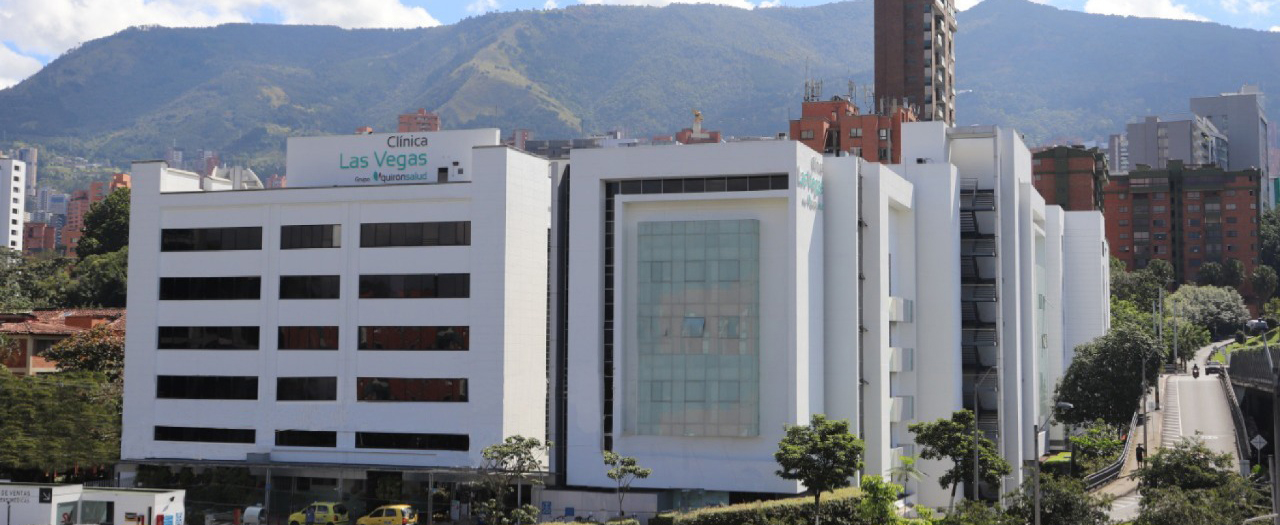Pulmonary Angiography
A pulmonary angiography is a diagnostic technique that combines X-ray imaging with the injection of a contrast material through a flexible catheter that is guided to the lungs to obtain detailed radiographic images of the pulmonary blood vessels.

General Description
A pulmonary angiography is a diagnostic procedure that provides precise and detailed radiographic images of the blood vessels in the lungs.
The procedure combines the use of ionizing radiation (X-rays) with the administration of a contrast material that allows the blood vessels and blood flow to be visualized. In a conventional radiological study, these structures cannot be seen since they have the same density as other soft tissues.
When Is It Indicated?
Pulmonary angiography helps identify and characterize various pulmonary conditions, including:
- Presence of blood clots in the arteries supplying the lungs (pulmonary thromboembolism or PTE).
- Narrowing or obstruction of the pulmonary vessels.
- Aneurysms.
- Pulmonary hypertension.
- Arteriovenous malformations.
In some cases, pulmonary angiography is also used to inject medication to dissolve clots, though this is not a routine procedure.
How Is It Performed?
Pulmonary angiography involves inserting a thin, flexible tube called a catheter into the pulmonary artery. To do this, a small incision is made in the groin or arm, through which the catheter is introduced into the corresponding blood vessel. Using real-time X-ray imaging displayed on a monitor as a guide, the catheter is advanced through the right chambers of the heart and into the pulmonary artery. Once in the correct position, contrast material is injected through the catheter, and several X-ray images of the blood vessels are taken.
However, pulmonary catheterization is increasingly being replaced by computed tomography (CT) pulmonary angiography, which does not require catheter insertion and instead involves intravenous administration of contrast material.
Risks
During the procedure, an increase in heart rate or an arrhythmia may occur, but these are temporary and resolve on their own. Additionally, it is common to develop bruising at the incision site.
In rare cases, serious complications can arise, including:
- Infection at the incision site.
- Bleeding.
- Injury to blood vessels caused by catheter movement.
- Formation of blood clots, which may block blood flow, dislodge, and cause a pulmonary embolism, heart attack, or strokeStrokeStroke .
- Allergic reaction to the contrast material, which can be mild (skin rash) or severe (anaphylaxis).
- Kidney damage due to the contrast material.
There is also a risk of cellular or tissue damage from exposure to ionizing radiation. However, since this is a one-time exposure, significant harm to the body is unlikely.
What to Expect from a Pulmonary Angiography
Before entering the radiology room, the patient must remove clothing and all metal objects (since metal is visible on X-ray images and may interfere with the diagnosis) and put on the provided hospital gown. While lying flat on the examination table, the patient is secured with straps or foam supports. Electrodes are placed to monitor heart rate and blood pressure, and a pulse oximeter is used to measure blood oxygen levels. The patient is monitored throughout the procedure and may receive a sedative to remain relaxed.
Before making the incision, the area is shaved, sterilized, and numbed with a local anesthetic. The patient may feel slight pressure when the incision is made but will not feel the catheter moving through the blood vessels. When the contrast material is injected, it is common to experience a brief sensation of warmth and a metallic taste. The patient must remain still and may be asked to hold their breath while the images are taken to ensure clarity.
The entire procedure takes approximately 60 to 90 minutes. Once the imaging is complete, the catheter is removed, and pressure is applied to the puncture site for 15 to 20 minutes to stop bleeding and promote healing. The patient is then transferred to the recovery area. If the catheter was inserted through the groin, the leg must remain completely still for several hours, and the patient may need to stay overnight in the hospital. Additionally, they should drink plenty of fluids to help eliminate the contrast material through urine. Physical exertion should be avoided in the following days.
Medical Specialties That Request Pulmonary Angiography
The medical specialties that use angiography as a diagnostic method include cardiology, angiology, and vascular surgery.
How to prepare
Blood tests are typically performed before the angiography to assess blood clotting and kidney function. Patients must fast for several hours before the procedure. Additionally, they must sign a consent form and inform their doctor if they:
- Have a history of iodine or contrast material allergies: they may be given steroids or antihistamines before the test.
- Have diabetes or kidney disease.
- Are taking anticoagulant medications: these increase the risk of bleeding, so treatment may be paused a few days before the procedure.
- Are pregnant: radiation exposure can affect the fetus, requiring specific protective measures (such as a lead apron).










































































































